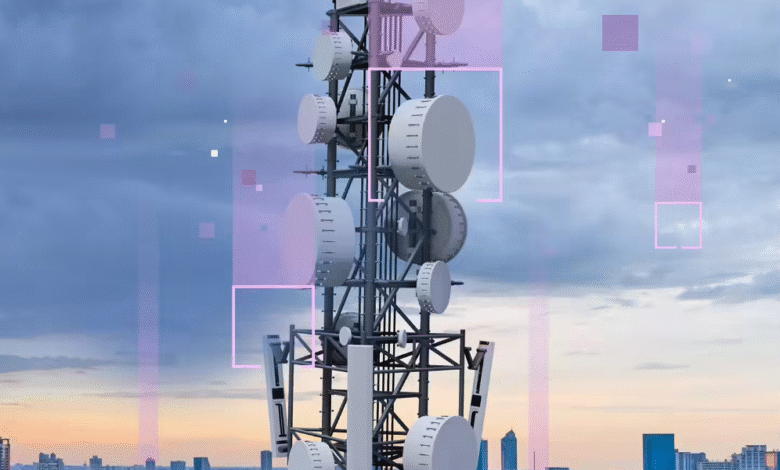5G to 6G: The Future of Ultra-Fast Connectivity

As we stand on the brink of transitioning from 5G to 6G, it is essential to explore the implications of this next-generation technology on connectivity and its broader societal impact. With anticipated improvements in data rates and latency, 6G is poised to redefine user experiences across various sectors, from healthcare to transportation. However, the journey toward this advanced network raises critical questions about infrastructure, security, and the ethical considerations of an increasingly connected world. What challenges and opportunities lie ahead as we navigate this uncharted territory?
Overview of 5G Technology
As mobile communication technology has evolved, 5G represents a significant leap forward, not only in speed but also in capacity and latency.
However, it faces notable 5G challenges, including infrastructure costs and spectrum allocation.
The broad range of 5G applications—from IoT devices to enhanced mobile broadband—demonstrates its potential to empower users, fostering a landscape of innovation and connectivity that aligns with the desire for freedom in communication.
Key Features of 6G
The transition from 5G to 6G technology promises significant advancements in data speeds and connectivity solutions.
With projected data rates exceeding 100 Gbps, 6G is set to facilitate ultra-reliable low-latency communication, which is critical for applications such as autonomous systems and smart cities.
Additionally, the integration of advanced connectivity solutions will enable seamless interactions across diverse devices and platforms, further enhancing user experiences and operational efficiencies.
See also: The Metaverse Reimagined: Where Virtual Reality Meets Real Business
Enhanced Data Speeds
Enhanced data speeds represent a cornerstone feature of 6G technology, poised to revolutionize connectivity across various sectors.
By employing advanced data compression techniques and optimized bandwidth allocation, 6G aims to achieve unprecedented transmission rates.
This capability not only enhances user experiences but also facilitates the seamless integration of IoT devices, enabling real-time data processing and fostering innovative applications that demand ultra-fast connectivity.
Advanced Connectivity Solutions
While transitioning from 5G to 6G, advanced connectivity solutions are set to redefine the landscape of communication technology.
Key features include advanced network architectures designed for enhanced scalability and efficiency, and next gen protocols that facilitate seamless data exchanges.
These innovations will empower users with unparalleled freedom, enabling a multitude of applications ranging from smart cities to immersive virtual experiences, ultimately transforming global connectivity.
Expected Speed Improvements
The transition from 5G to 6G is marked by significant advancements in speed, with current 5G networks offering peak data rates of up to 10 Gbps.
Projections for 6G capabilities suggest potential speeds exceeding 100 Gbps, facilitating new real-world applications such as ultra-reliable low-latency communications and immersive augmented reality experiences.
Understanding these improvements is crucial for stakeholders aiming to leverage the full potential of next-generation connectivity.
Current 5G Speeds
As mobile networks transition to 5G, users can expect significant improvements in speed and connectivity compared to previous generations.
Current 5G speeds vary globally, reflecting the pace of adoption. Key aspects include:
- Peak download speeds reaching up to 10 Gbps
- Latency reductions to as low as 1 millisecond
- Enhanced capacity for simultaneous connections
- Increased reliability for critical applications
These factors enhance user experience significantly.
Projected 6G Capabilities
How can we anticipate the evolution of mobile connectivity with the advent of 6G?
Projected capabilities suggest speeds exceeding 100 Gbps, significantly enhancing 6G applications like immersive virtual reality and real-time data analytics.
However, these advancements bring 6G challenges, including infrastructure development and spectrum management.
Addressing these issues is essential for realizing the full potential of ultra-fast connectivity in future networks.
Real-World Applications
Projected advancements in 6G connectivity not only promise unprecedented speeds but also open avenues for transformative real-world applications across various sectors.
Key areas include:
- Smart cities leveraging real-time data for efficient resource management
- Autonomous vehicles achieving seamless communication with infrastructure
- Enhanced telemedicine advancements enabling remote diagnostics
- Immersive experiences in education technology through augmented and virtual reality
These innovations will redefine operational efficiency and user engagement.
Latency and Reliability Enhancements
The transition from 5G to 6G connectivity is poised to introduce significant enhancements in latency and reliability, critical factors that underpin the performance of next-generation networks.
With the advent of low latency networks, users can expect near-instantaneous data transmission, fostering real-time applications.
Additionally, reliability improvements will ensure consistent connectivity, essential for mission-critical services and applications in an increasingly interconnected world.
Impact on IoT and Smart Devices
As 6G technology emerges, its impact on the Internet of Things (IoT) and smart devices will be transformative, enabling unprecedented levels of connectivity and functionality.
This evolution is poised to enhance:
- Device interoperability within smart home environments
- Efficient data management across IoT ecosystems
- Automation trends in smart cities
- Energy efficiency through edge computing solutions
These advancements will significantly improve user experience and operational effectiveness.
Applications in Various Industries
Emerging 6G technology will catalyze innovative applications across various industries, building on the foundational improvements in IoT and smart devices. Transformative impacts will include healthcare innovations, enhanced industrial automation, immersive entertainment experiences, smart agriculture practices, increased transportation efficiency, and advancements in remote work and education, all while facilitating robust environmental monitoring systems.
| Industry | Key Applications |
|---|---|
| Healthcare | Remote patient monitoring |
| Agriculture | Precision farming techniques |
| Transportation | Smart traffic management |
Security and Privacy Considerations
While 6G technology promises unprecedented connectivity and innovation, it also introduces significant security and privacy challenges that must be addressed to protect users and data integrity.
Essential measures include:
- Robust data protection protocols
- Comprehensive privacy regulations
- Advanced cybersecurity measures
- User consent mechanisms
Ensuring network encryption and effective threat detection is critical for compliance standards and secure communications in this evolving landscape.
Global Infrastructure Developments
Given the rapid evolution of connectivity technologies, global infrastructure developments for 6G are imperative to support the anticipated surge in data traffic and the demand for low-latency applications.
Addressing infrastructure challenges through public-private partnerships, innovative funding strategies, and international collaboration is essential.
Additionally, integrating sustainability initiatives and regulatory frameworks will enhance urban deployment and improve rural connectivity, ensuring equitable access for all users.
Future Trends and Expectations
As the transition from 5G to 6G connectivity unfolds, several key trends and expectations are emerging that will shape the future landscape of telecommunications.
- Enhanced socioeconomic impacts through widespread digital inclusion
- Increased demand for regulatory frameworks addressing privacy and security
- Innovations in AI and machine learning for network optimization
- Integration of advanced satellite technologies for global coverage
These elements will redefine connectivity paradigms.
Conclusion
The transition from 5G to 6G represents a technological renaissance, akin to the leap from black-and-white television to color broadcasting. Just as the latter transformed viewer engagement and experience, 6G will redefine connectivity, enabling a seamless tapestry of digital interactions. With data rates exceeding 100 Gbps and latency reduced to 1 millisecond, the potential for innovation across sectors is profound. As society stands on the brink of this new era, the implications for enhanced operational efficiencies and user experiences are both exciting and transformative.



